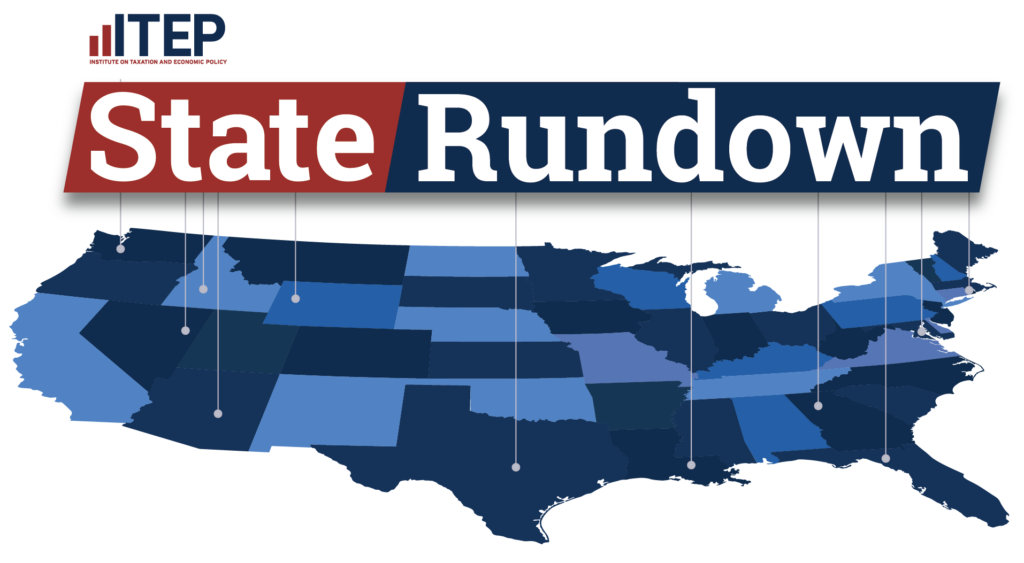It’s easy to hold up Kansas as the poster child for regressive tax policies gone awry.
By now it’s apparent Gov. Sam Brownback and his allies in the state legislature were wrong when they predicted lopsided tax cuts would boost the state’s economy. The state will have trouble funding priorities such as education and services for the disabled since its revenue is hundreds of millions less than projected. And just last month, Standard & Poor’s downgraded the state’s bond rating because Brownback’s tax cuts cost far more than promised.
But make no mistake. The tax cuts, which disproportionately benefited higher-income earners and corporations, made worse an already regressive tax code. And in that sense, Kansas is not alone.

When all taxes assessed by state and local governments are taken into account, every state imposes higher effective tax rates on low-income families than the richest tax payers. On average, the lowest income households (bottom 20 percent) pay 11.1 percent of their income in state taxes, middle income households pay about 9.4 percent and the top 1 percent only pay 5.6 percent. This means state tax systems are actually making it harder for families to escape poverty.
Given a high poverty rate, stagnant wages and eroding family wealth, it’s perplexing that governors and state legislatures are getting away with selling the public the bill of goods that is trickle-down economics. We don’t all do better when the wealthy prosper at the expense of everyone else. In fact, we’re all worse for the wear and tear.
State and local data on income and poverty released today by the U.S. Census reveal, as did the national numbers, that not much has changed since the previous year and poverty remains significantly higher than before the Great Recession took hold. Most state poverty rates held steady. Three states experienced an increase in the number or share of residents living in poverty, and two states had a decline.
As I mentioned in a previous post, new Census poverty data is newsworthy more so because we’ve all become desensitized to a poverty rate that continually grew throughout the 2000s and remains higher (currently 2 percentage points) than it was before the Great Recession.
But when experts project the youngest generations may be worse off than their parents, or when median family income is 8 percent less today that it was in 2007, or when poverty is near generational highs, we all should pay attention, especially our elected officials.
The Institute on Taxation and Economic Policy today released a study, State Tax Codes as Poverty Fighting Tools, which examines four specific tax policies in each of the 50 states. The report recommends that states should enact or expand refundable Earned Income Tax Credits (EITC), offer refundable property tax credits for low-income homeowners and renters, create refundable, targeted low-income credits to help offset regressive sales and excise taxes, and increase the value of existing child- related tax credits. The full report includes state-by-state analysis of current polices.

Specifically, the report notes, “In most states, a true remedy for state tax unfairness would require comprehensive tax reform. Short of this, lawmakers should use their states’ tax systems as a means of providing affordable, effective and targeted assistance to people living in or close to poverty in their states.”
This is certainly a better approach than soaking the poor. A Standard & Poor’s study released earlier this week demonstrated that growing income inequality is a reason states are failing to collect enough revenue to meet their needs. It’s easy to surmise that, as wealth concentrates at the top and incomes stagnate for low- and middle-income people, states’ tax the poor more strategies result in flat or declining revenue and ultimately more difficulty funding priorities from education to infrastructure.
There’s a better way. A recent report from Citizens for Tax Justice reveals the average single-parent, two-child family receives a $4,550 income boost with the federal EITC, and a two-parent, two-child low-income, working household receives a boost of $5,790. Twenty-five states and the District of Columbia offer state Earned Income Tax Credits based on the federal EITC, and a May 2014 report from ITEP outlines how this is an effective tool.
We are under no illusion that progressive taxation will solve poverty, but it can play a big role in mitigating poverty. And the harsh reality is that no state is fully living up to that promise. What is painfully clear, as Kansas tax cuts have demonstrated, is that adding more regressive tax cuts to an already unfair tax structure exacerbates poverty, shortchanges families, and starves states of funds to invest in vital services on which we all rely.




